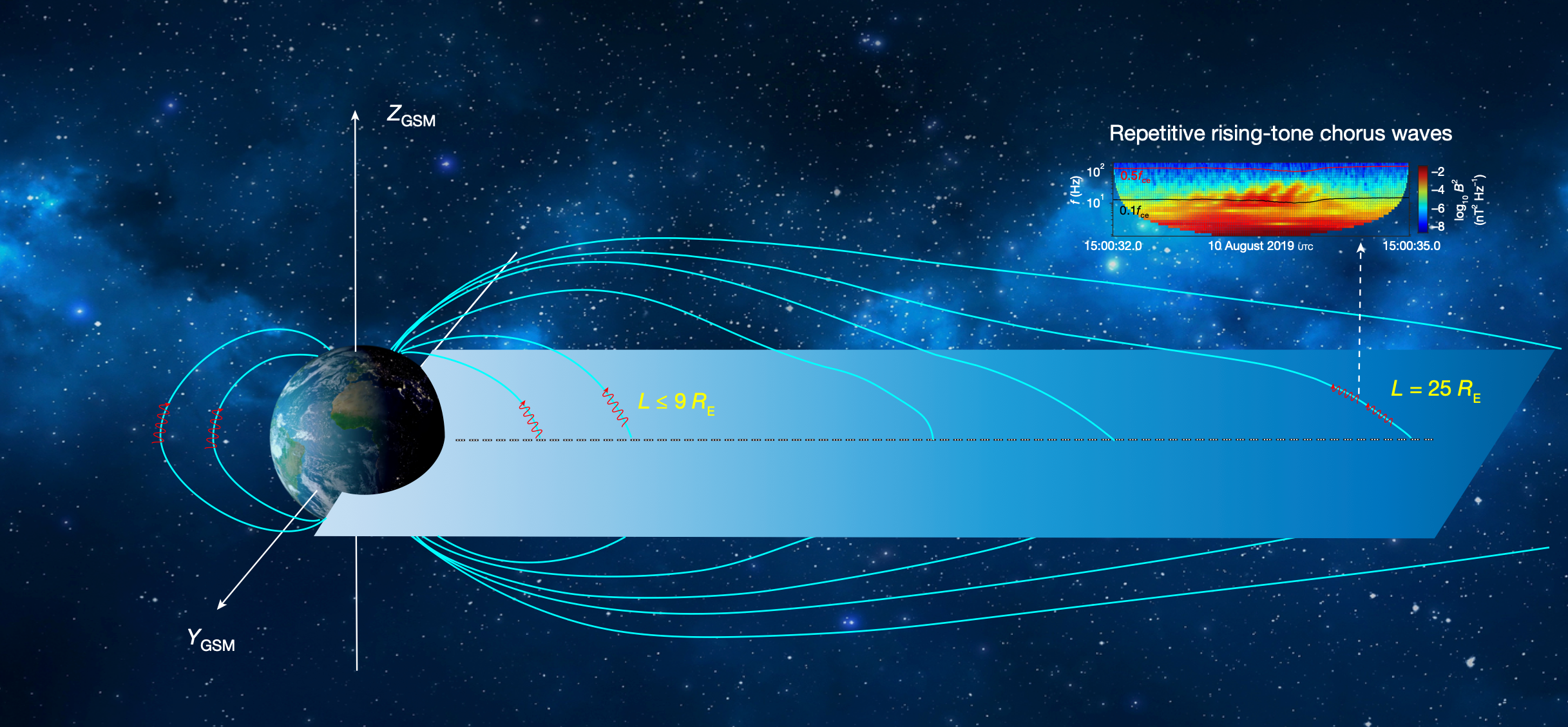Astronomers have heard bursts of radiation from space sharing similarities with birdsong, shedding more light on the decades-old mysterious phenomenon that could affect satellites.
These strange waves of space radiation last only a few tenths of a second with a characteristic increasing frequency, and have been detected since the 1960s.
They are known to emerge from about 100,000 km away from Earth, aligning with the Earth’s magnetic field, and are thought to play a key role in the formation of pulsating auroras.
When these waves are converted into audio signals, scientists have found them to sound similar to birds chirping.

Scientists have hoped to better understand the phenomenon as these waves are known to accelerate electrons in space, turning them into “killer electrons” capable of damaging satellites.
However, their origin and formation process has remained elusive.
Until now, scientists have held that these “chorus waves” form at points in space along the Earth’s magnetic field – which resembles that of a large bar magnet – out to about 51,000 km above the planet’s surface.
Previous research has held that a dipole magnetic field, similar to that of a bar magnet, was key for these strange sounds to emerge.
But now, researchers have detected similar waves lasting a tenth of a second with the characteristic high-frequency chirping rate, but from further out in space where the magnetic field is highly distorted.
“The presence of repetitive, rising-tone chorus waves, where there is no effect due to the magnetic dipolar field, is beyond the traditional expectation and provides important, new insights into understanding their generation and propagation in space,” scientists write.
The findings, according to researchers, also “indicate that their generation is not uniquely determined by the local environment and that they can develop anywhere in space.”
Scientists theorise in the new study that these waves may be developing due to the interaction of high-energy electrons in space.
“Thermal electrons serve as the energy source for the waves,” they write, however adding that more research is needed to find exactly how they form.
Physicist Richard Horne part of the British Antarctic Survey, who was not involved in the research, said the new findings prompt “a closer look” at the phenomenon.
“Their observations are important because the dipolar nature of the magnetic field has a crucial role in the way that chorus waves are generated – or thought to be generated,” Dr Horne said.
“It is a surprising result in a surprising region, and it prompts further investigation of chorus waves in regions in which Earth’s magnetic field deviates substantially from a dipole,” he said.
“The discovery doesn’t rule out the existing theory…but it means that scientists need to take a closer look,” he added.







